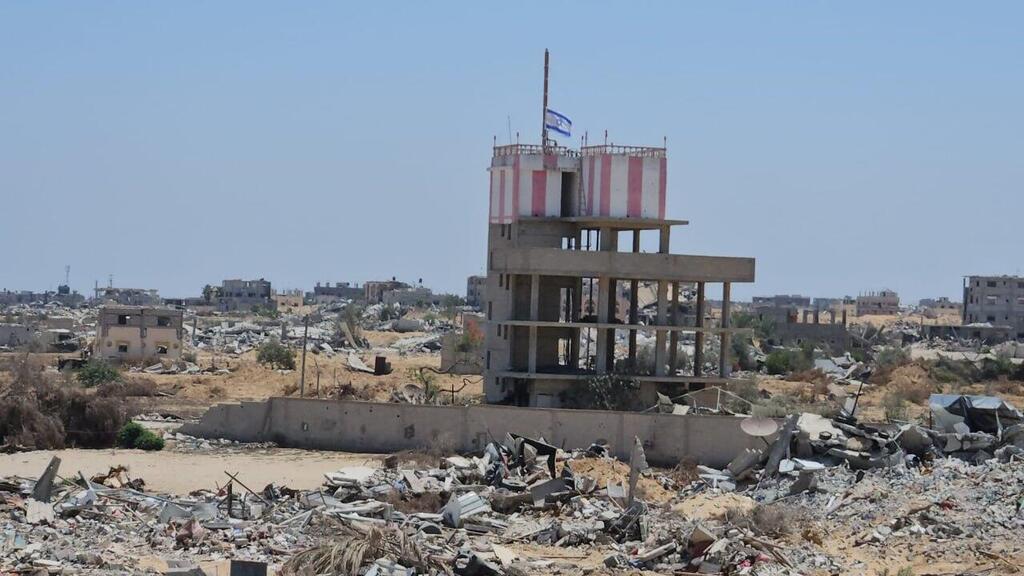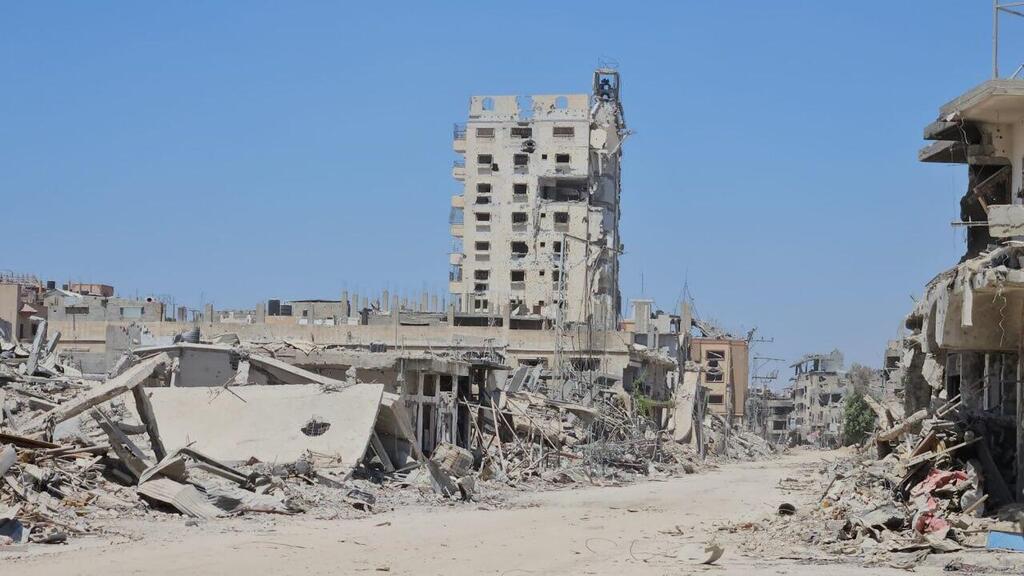Getting your Trinity Audio player ready...
The IDF disputes UN figures of the scope of destruction in Gaza. Figures revealed for the first time by ynet on Thursday, claim only 16% of buildings in the Strip were destroyed since the start of the war, as opposed to 50% according to UN figures and 70% in foreign media reports. The data referred to the period ending May 31.
The military said it had destroyed 36% of the temporary structures located in agricultural fields, such as sheds and tents, used by the terrorists.
The IDF used digital aerial mapping done by its intelligence in the year prior to the war, to determine the amount of destruction and found that before October 7, there were 453,188 buildings in Gaza, 217,761 of them permanent structures including homes, apartment blocks, public and business buildings and 235,427 temporary structures.
The UN claimed in a report which relied on satellite images and quoted extensively in the media, that more than half of Gaza's buildings were destroyed in the nearly nine months of war, to the extent that they could no longer be used. It said structures damaged by a single shell or missile were not counted and only buildings completely demolished or compromised in a manner that would endanger the safety of people, were added to the count.
According to reports in the international media the scope of destruction was even greater. The Wall Street Journal said in December that the war caused the destruction of 70% of Gaza's buildings and even compared the situation to the carpet bombing of Dresden in the final days of WWII. The paper claimed that most of Gaza's homes were damaged or destroyed.
The IDF said unlike the UN and media outlets, it collects almost daily visual evidence using advanced drones and other technological means in addition to satellite imagery so their data is more reliable and would be presented to the various international tribunals and investigations into Israel's conduct in the war.
Thousands of the buildings destroyed by the forces in their offensive were not necessarily owned or used by the terrorists and were near the border with Israel. They were demolished to create a one-kilometer (just over half a mile) wide buffer zone between the Strip and the communities near the border, which was condemned by the international community for the expropriation of Palestinian land on a large scale, including Gazan agricultural fields.
The IDF discovered the extent of the use by terrorists of homes in Gaza, which was ten times earlier estimations. Nearly every home is the neighborhood where forces operated, was used to launch attacks, store weapons, and command terror forces. Those were mostly destroyed using artillery shells while aerial strikes were preserved for massive attacks on thousands of higher-valued targets. Heavy machinery of the Engineering Corps was also used to demolish buildings as well as the underground terror infrastructure.
The need to demolish the massive infrastructure built by Hamas led to the procurement of explosives from various countries and to actions later banned by IDF commanders including the torching of buildings when no other means were available.




